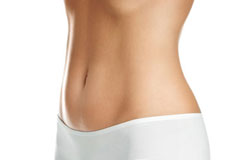On November 17, 2006, the FDA approved silicone gel implants. Since the items happen to have been determined safe and effective, the FDA continues to watch them by requiring each breast implant manufacturer (Mentor and Inamed) to conduct a sizable postapproval study following about 40,000 women for ten years after receiving breast enlargements. The FDA frequently requires postmarket studies to reply to important questions that may only be clarified when a product is in larger use, like the incidence of rare adverse occasions.
The FDA’s decision to approve these implants took its origin from an intensive overview of each company’s clinical (core) and preclinical studies, an overview of studies by independent scientists and deliberations of advisory panels of outside experts that hear public comment from hundreds of stakeholders. Additionally, the FDA carried out assessments of every company’s manufacturing facilities to find out if they adhere to the FDA’s Good Manufacturing Practices. A few of the complications reported within the core studies included hardening of the area surrounding the implant, breast discomfort, change in nipple sensation, implant rupture and the requirement for additional surgery. However, nearly all women during these studies reported being pleased with their implants.
In the previous decade, independent research has examined whether silicone gel-filled breast enlargements are connected with ligament disease or cancer. The studies, together with a report through the Institute of Medicine, have concluded there’s no convincing evidence that breast enlargements are connected with either of those illnesses. However, these problems will be addressed further within the postapproval studies carried out through the companies.
About Silicone Gel
Silicon may be the second most abundant element on the planet, alongside oxygen. Silicones are really a family of chemical substances. They are constructed with silicon which is a naturally sourced element present in sand, quartz, and rock. When silicon is combined with oxygen, hydrogen, and carbon, it becomes silicone. Silicone can be created in different forms. Low molecular weight silicones form gels. Middle molecular weight forms oils, and high molecular weight forms elastomers and rubbers. Silicone can be found in many other kinds of implants, for example facial implants, artificial joints, drainage systems, etc.
Silicone gel breast enlargements come pre-filled, and therefore there’s no fill to be added. The only real downside of a pre-filled implant would be that the cut must be a little longer, with respect to the size the implant to become placed. This is also true for textured silicone and gummy bear silicone implants, which are somewhat firmer. Additionally, textured silicone implants need a longer incision because the shell is textured. Because silicone gel breast implants come pre-filled, they can’t be placed through the TUBA cut (nor can any other kind of pre-filled implant).




